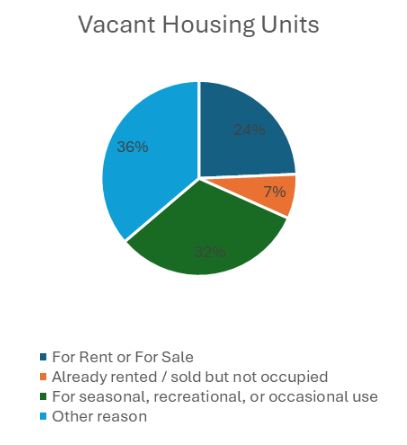Let’s explore Household Vacancies in America
In the United States 10% of housing units are vacant. That’s 14 million vacant units in a total of 145 million housing units.
The lowest vacancy rate is 7% for California, Illinois, Maryland, Nebraska, New Jersey, Oregon, and Utah.
And the highest vacancy is in Maine at 19% with Vermont right behind at 18%.
About a quarter of the vacant units are on the market and already vacated – just waiting to be rented or sold but vacant at this moment.
There is an additional 7% that are already rented out or sold but still vacant. This often happens when renovations are being done before
moving in, or the new tenant is relocating from afar and it takes a little while to make the move, or something like that.
About a third of vacant units are seasonal, recreational, or occasional use buildings. So, the unit is empty if it’s not the right season to be there.
Maybe it’s a beach house or it’s up at the lake or in mountains those can be lovely in the summer or spring and fall but maybe not used during
the winter – thus they are seasonal. In the Northeast this explains almost all the vacant units. In Vermont, Maine and New Hampshire this accounts
for 76%, 73% and 67% of all vacant units – they are seasonal. But it’s not just places that are too cold in the winter that are vacant, Florida
is at 53% because folks often go there in the winter, so it’s vacant in the summer.
The last third of the vacancies are a variety of other reasons.
It’s easy to run data reports about home ownership, educational attainment, income, family structure, households and hundreds of other
variables with GeoLytics demographic data products – like our American Community Survey or our Estimates and Projections.






